Proposed Changes to Form 5500 by the Department of Labor
In July 2016, the Department of Labor (DOL) proposed changes to the Form 5500 Annual Return/Report of Employee Benefit Plan. Most of these changes will allow the DOL to collect more information on benefit plans offered by employers.
These proposed changes will affect employers who offer any of the following benefit plans:
- Pension plans
- 401(K)s
- Health and medical plans
- Vacation plans
- Life insurance plans
But what do all these changes mean?
What is the Purpose of the Form 5500?
The Form 5500 Annual Return/Report is utilized by the private sector, federal agencies, and Congress to explore many aspects of the nation’s working class. In addition to determining economic policies and trends with the information provided on this form, they also use it to examine employee benefits and tax. The DOL, Internal Revenue Service (IRS), and Pension Benefit Guarantee Corporation (PBGC) rely on the form for research and compliance purposes.
How will the Form 5500 Affect Group Health Plans?
The proposed Schedule J of Form 5500 will be required of all group health plans. This new schedule will require its filers to report types of employee benefits offered, funding methods, and contributions to each plan. Required compliance questions will include those on HIPAA portability and nondiscrimination, the ACA, Women’s Health and Cancer Rights Act, and other federal and DOL regulations.
Also, many employers who offer small, unfunded, or insured group health plans will no longer be able to claim certain exemptions when filing the new Schedule J, should the proposed changes be approved.
How will the Form 5500 Affect Retirement Plans and Assets?
Filing information regarding retirement plans will also change. More information about the service providers of these employee benefits will be required on Schedule C in order to ensure all service providers are providing employers with accurate information. The proposed changes are also meant as a way to assess any arrangements that involve record-keeping, investments, and more to confirm that administrative services are being carried out correctly.
The Schedule of Assets (Schedule H) will be significantly expanded and require more detailed information about assets held by retirement plans, including common collective trust arrangements and hard to value investments. Plan sponsors will also include more information about the plan design, employer contributions, and employee participation rates.
How will These Changes Impact Audit Requirements?
For smaller defined contribution plans, this proposal may ease audit requirements. Under the current rules, a plan with 100 or more participants at the beginning of the plan year must have an audit performed by an independent qualified public accountant. Under the revised rules, the plan will require an audit only if 100 or more participants have account balances at the beginning of the year. This has the potential to save employers time and audit costs.
Public comments on the proposed changes are due October 4, 2016. Final changes will take effect for the 2019 plan year filings. Keep in mind that the DOL has estimated the additional reporting will take twice as long to complete and file the initial year.
If you have questions about your 5500 filing requirements and how these changes will impact them, please contact us. We can help you understand your responsibilities as a plan administrator.
By Rebecca S. Walck, CPA




